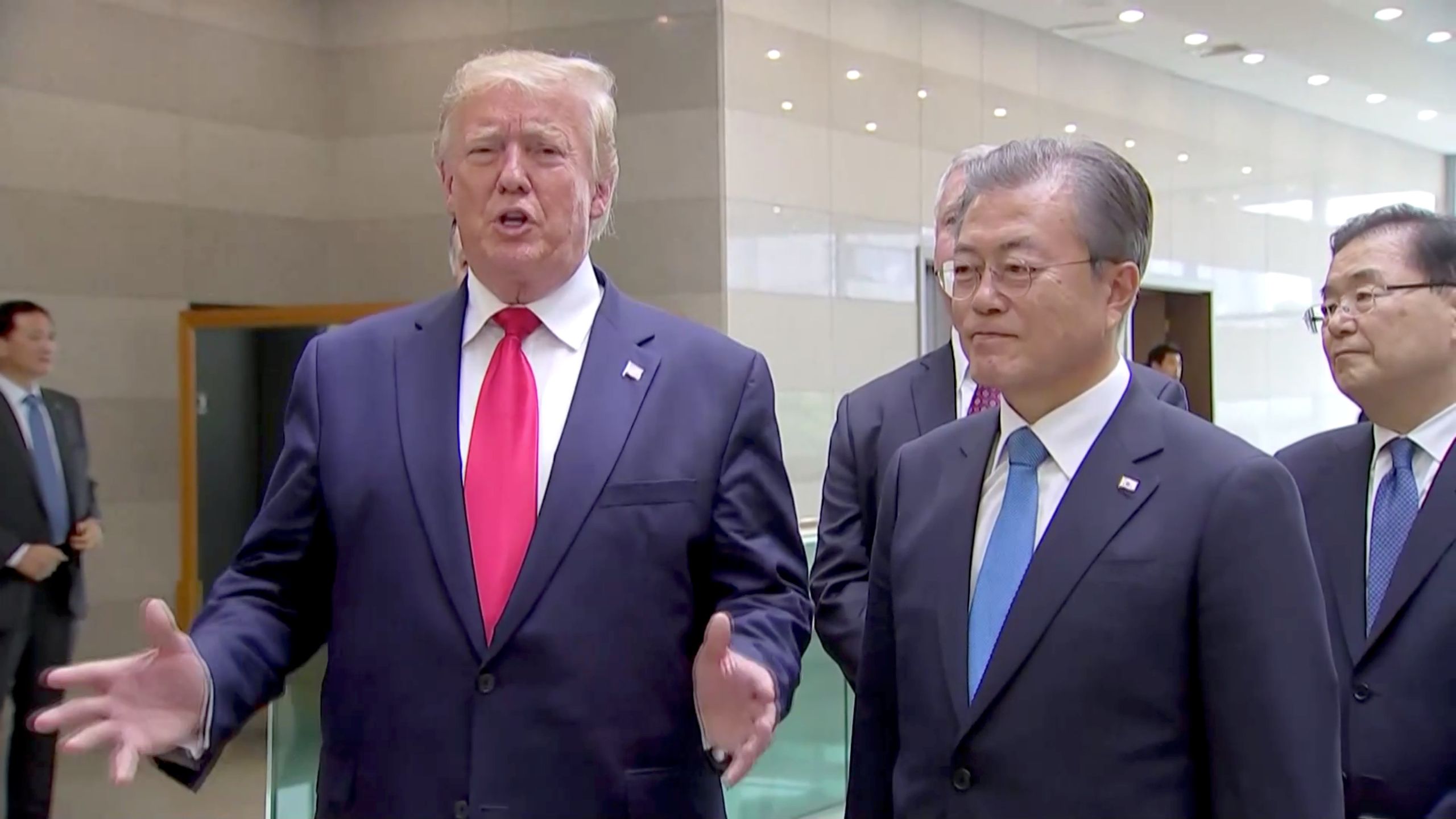Challenges in the U.S.-South Korea Alliance

Since 1954, a mutual defence treaty between the U.S. and the Republic of Korea has guaranteed South Korea’s national security. About 26,000 U.S. troops are currently stationed on its territory (the third-largest contingent of U.S. troops in the world, after Japan and Germany) and the U.S. has extended the nuclear umbrella to deter North Korean aggression. In addition, since 1950, the U.S. has exercised wartime operational control (OPCON) over the South Korean military. It means that the commander-in-chief is a U.S. general who heads the Combined Forces Command. The alliance is part of U.S. regional strategy, not just on the Korean Peninsula. Currently, that strategy focuses primarily on containing China. However, during the Trump administration, problems between the allies have arisen and mainly concern the dispute over defence cost-sharing and different approaches to the situation in the region.
Cost-Sharing Dispute
The legal basis determining the conditions of stationing U.S. troops in South Korea is the Status of Forces Agreement of 1967. It is supplemented by the Special Measures Agreement (SMA), re-negotiated every five years since 1991, under which South Korea has paid the partial cost of maintaining the U.S. Forces Korea (USFK) on its territory. The current deal was signed in February but unlike the longer terms of the previous agreements, this one expires at the end of this year. The provisional nature of this agreement was the result of the dispute between the allies. The Trump administration wants South Korea to double its financial contribution, but the South’s leaders would not do it, instead agreeing to pay 8.2% more than in the previous year ($924 million), covering about 50% of the current costs of USFK stationing.
From South Korea’s perspective, the most difficult element of the talks that started in September is how to meet the U.S. financial expectations. According to South Korean press, during his visit to Seoul in July, then-U.S. National Security Advisor John Bolton told the South Korean authorities that the U.S. sought even a fivefold increase, to $4.8 billion. This amount definitely exceeds the direct costs of stationing USFK, estimated at about $2 billion. The U.S. proposal appeared to assume that South Korea would also cover, as part of an additional agreement, the costs of pay and training for soldiers and a new category of operational support—joint military drills and the deployment of U.S. strategic assets (such as strategic bombers) in the region.
In response, South Korea indicated that, in addition to the direct SMA costs, it also spends about $2 billion a year, mainly on infrastructure serving the USFK. In addition, as part of plans adopted in 2004 to relocate U.S. forces south of the border and away from Seoul, South Korea paid more than 90% of the costs ($9.7 billion) of building Camp Humphreys (70 km from the capital)—the world’s largest overseas U.S. military base. South Korea has also increased its defence budget, which this year is about $42 billion (8.2% more than last year), which amounted to 2.4% of GDP. In turn, the plan for 2020–2024 assumes a total expenditure of $242 billion (average annual increase of 7%) on defence. This may be beneficial for the U.S. because South Korea is the third-largest importer of U.S. arms—in 2006–2018, it spent about $30 billion for weapons and systems.
The increase in military expenditures is one of the measures aimed at the planned South Korean takeover of wartime operational control of its armed forces from the U.S. The President of South Korea Moon Jae-in hopes that this process will be completed by the end of his term in 2022. Another part of the preparation to take over OPCON is carrying out joint drills with the U.S. The problem, however, is that Trump cancelled the large-scale joint drills after his meeting with Kim Jong-un in Singapore last year. Although this year new exercises were set up on a smaller scale, the U.S. president still questions their purpose, saying they are too expensive.
Different Approaches to the Situation in the Region
In addition to the financial differences between the allies, they share different views of the region’s problems. South Korea and the U.S. have separate approaches to dialogue with North Korea. Moon has so far failed to persuade Trump to partially lift the sanctions against North Korea, which would enable the resumption of inter-Korean economic cooperation. Members of the Moon administration have not hidden their opinion that the U.S. is not flexible enough in the negotiations with North Korea and has unrealistic demands for denuclearisation.
A serious test for the alliance is South Korea’s attitude to the U.S.-China rivalry. From the U.S. perspective, South Korea should support its Indo-Pacific Strategy, which is focused on containing China. The U.S. expects that South Korea, due to the alliance and the South’s growing military potential, will shoulder greater responsibility for security in the region. The U.S. has convinced South Korea to engage in the strategy through participation in military operations outside the peninsula, for example, in the South China Sea. During Trump’s visit to Seoul in June, Moon officially supported strategy, arguing that it coincides with South Korea’s New Southern Policy, aimed at deepening ties with Southeast Asia. However, South Korea’s attitude toward the U.S. strategy remains restrained. It does not want a confrontation with China, which is its largest economic partner. China’s response to the deployment of the THAAD system in South Korea in 2017 is seen as a warning. China at the time applied unofficial economic sanctions (including a significant reduction in tourists from China), which was severe for the South Korean economy.
The current dispute between South Korea and Japan has also challenged U.S. policy in the region. Political and historical tensions were extended to trade and security issues when in August South Korea withdrew from an intelligence-sharing agreement with Japan. This decision is unfavourable for the U.S. because it hinders trilateral cooperation between the allies and shows the limitations of the American alliances in the region in the context of the competition with China. This was visible in July when Japan and South Korea did not react jointly to the violation of their airspace by a Russian aircraft included in the first-ever Chinese-Russian air patrol in the region. Sino-Russian cooperation may be a counterweight to the network of U.S. alliances in the region, and their joint actions will attempt to check the effectiveness of the U.S. alliances and split them.
Perspectives and Conclusions
By the end of the year, the U.S. will apply a negotiating strategy based on pressure and demands on South Korea in the case of the SMA. It is possible that Trump will threaten to withdraw at least some of the U.S. forces from South Korea. The White House’s radical attitude could be toned down by the Pentagon, which attaches greater importance to the alliance with South Korea. Ultimately, it is likely the U.S. and South Korea will agree on a cost-sharing deal and the latter will significantly increase its share. However, the consequences for the U.S. may be increased tensions with its ally and the undermining of political confidence in the alliance in South Korea. As a result, the latter may be even more inclined to develop its own conventional defence capabilities by investing in its own industry. U.S. pressure may also discourage South Korea from supporting the larger American strategy. The lack of support from allies in the region will weaken the U.S. potential in its rivalry with China.
The negotiations between the U.S. and South Korea may reveal tactics the current U.S. administration might adopt towards other allies from which it wants a greater financial contribution, as well as the effect of those tactics. In the region, this is important to Japan, which will start similar talks next year (the current agreement expires at the end of 2020). The U.S. pressure on its allies could also be applied to European countries, especially towards Germany, which covers only 28% of the costs of stationing U.S. troops and does not meet the NATO 2%-of-GDP target on military spending, and even Poland because of the increased presence of U.S. soldiers on its territory.





